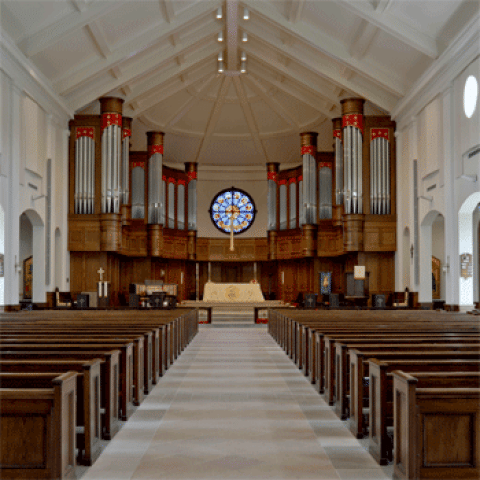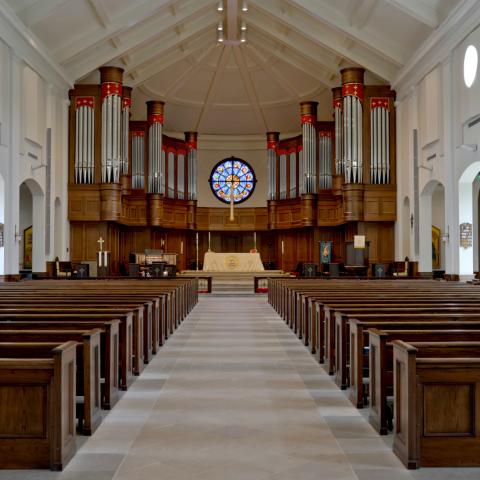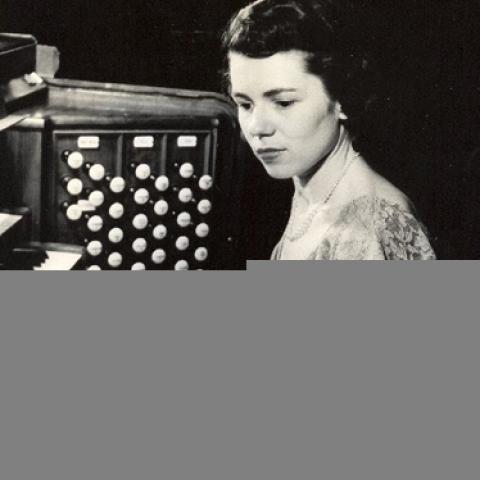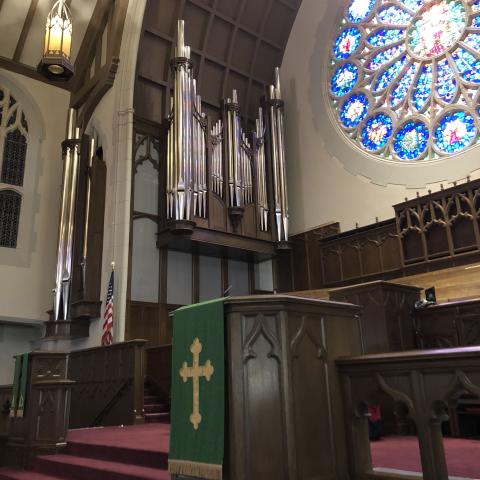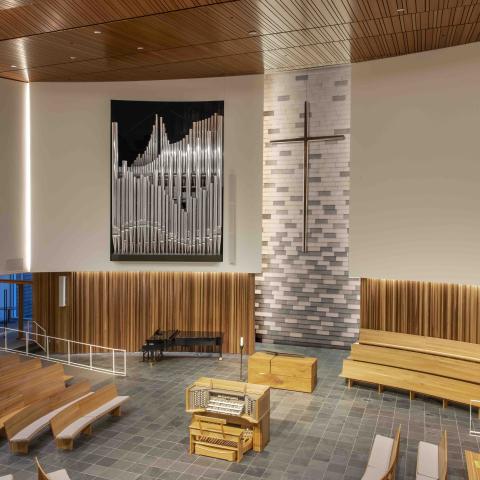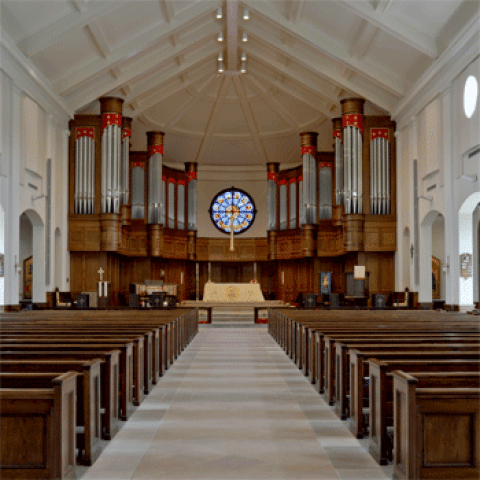
John-Paul Buzard Pipe Organ Builders of Champaign, Illinois, announces it has signed a contract for its Opus 48 with Saint George’s Episcopal Church, Nashville, Tennessee. The main organ, which will be installed in 2022, will initially have 48 stops with 7 stops prepared for future addition, for a total of 55 stops, 65 ranks. An antiphonal organ and horizontal trumpet are also prepared for future addition, filling out the four-manual and pedal specification. Nearly all of the organ will be under expression, including the full-length wood 32′ Pedal Contra Trombone and 16′ Pedal Ophicleide extension of the Solo Tuba Mirabilis. The Great chorus, consisting of First and Second Open Diapasons and corresponding upperwork, will be unenclosed.
The new organ’s cases will be made from solid walnut, stained and finished to match the church’s existing woodworking. The round towers and flats will be filled with the largest pipes of the 16′ Diapasons, the 16′ Dulciana, and the 8′ manual and pedal Open Diapasons, all made of polished tin. The pipe shades will be made of basswood enameled in “Prayer Book Red,” pierced with stylized and gold-leafed St. George crosses.
The new organ is a part of a larger series of projects to update, remodel, and enlarge the church’s facilities. St. George’s rector is the Reverend Leigh Spruill, music director is Woosug Kang, organist and associate director is Gerry Senechal. Wilma Jensen is St. George’s Organist Emerita.
The specification can be viewed at the company’s website: www.buzardorgans.com. The church’s website: www.stgeorgesnashville.org.

